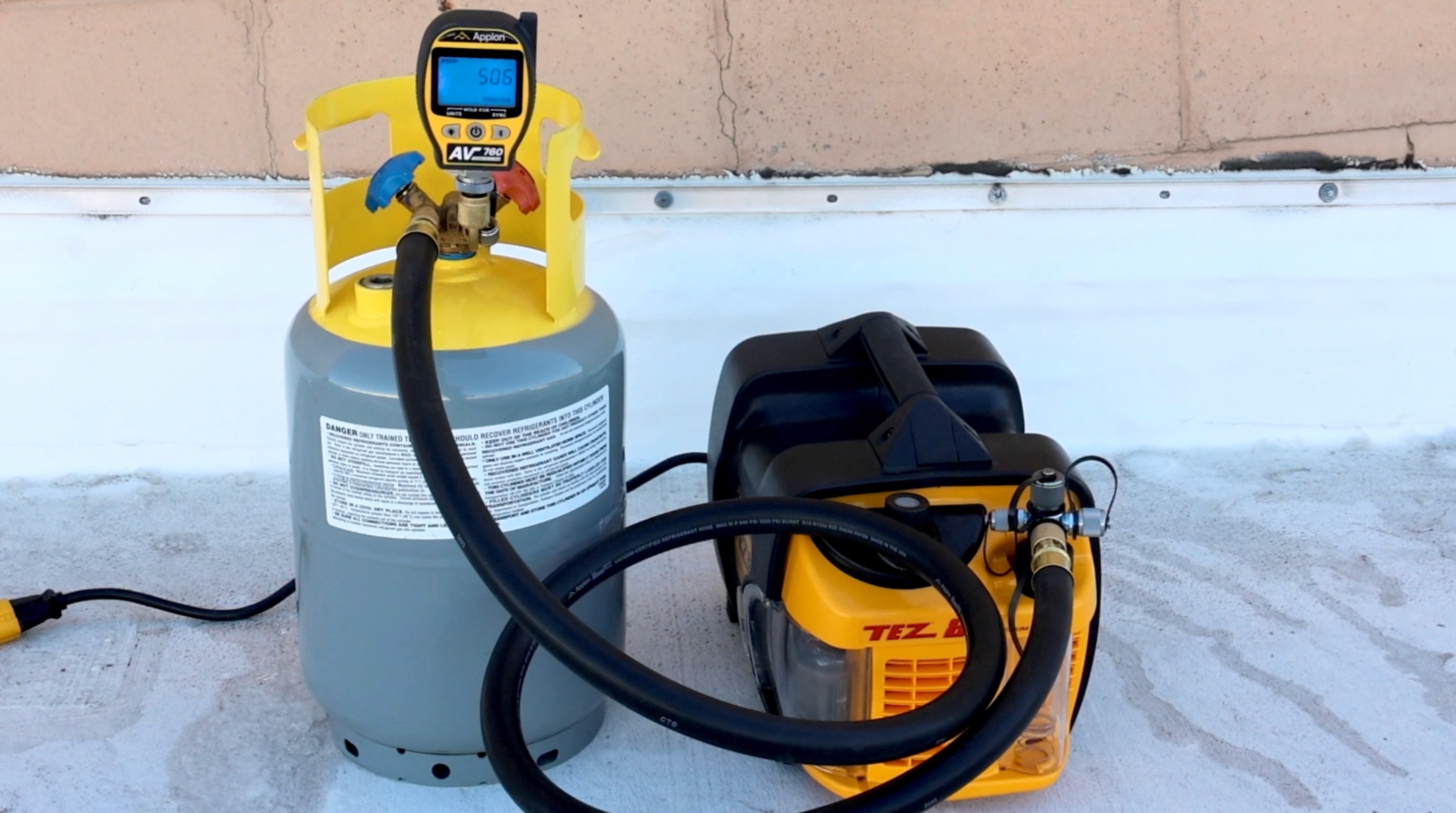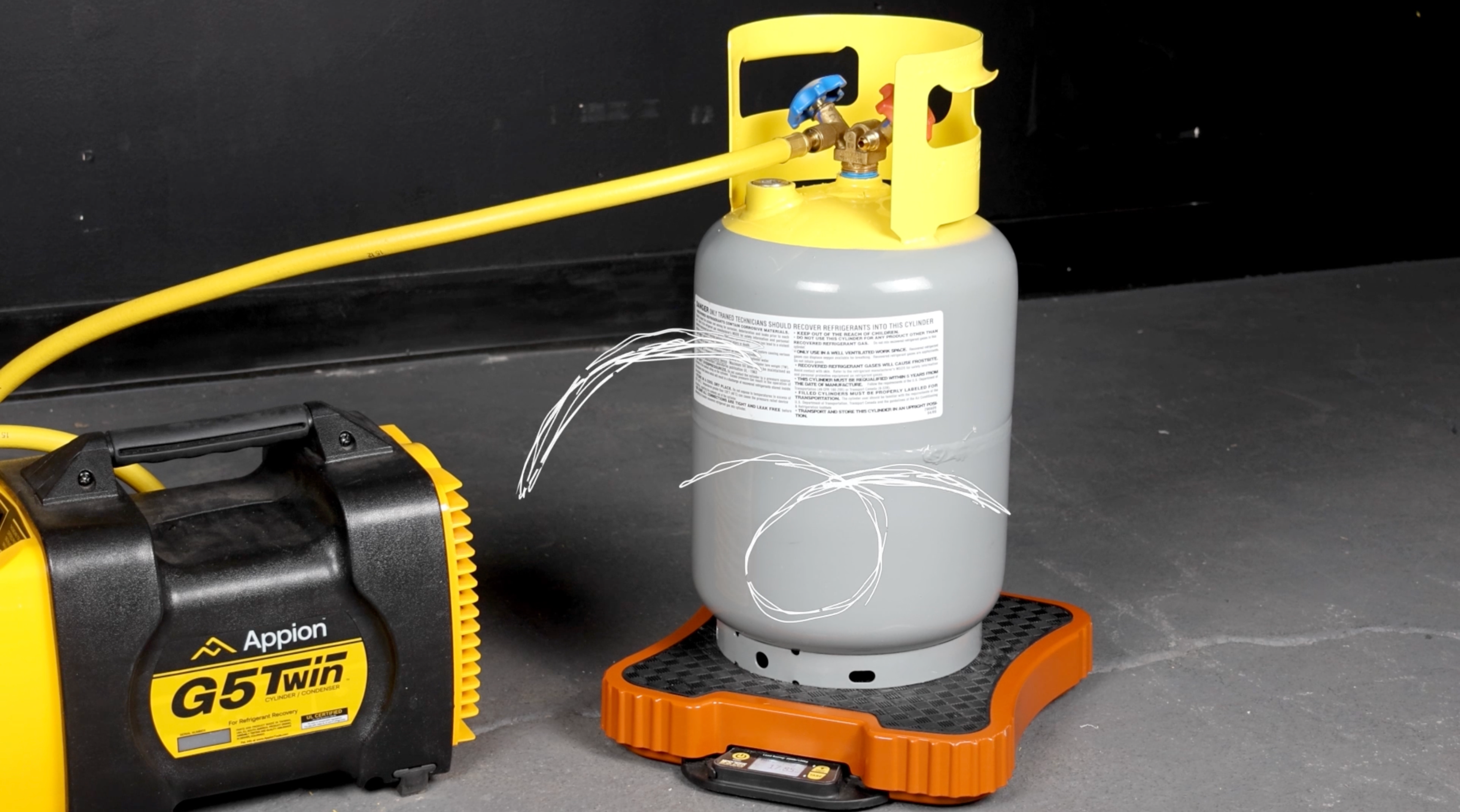Fast Recovery Series: Cylinders
Sep 27th 2024
Fast Recovery Series: Cylinders
Introduction
Understanding your recovery cylinder is paramount when performing a safe system service, while also abiding by industry rules and regulations.
Cylinder Safety & Compatibility
Before using a recovery cylinder, check that it is within its certified testing date. Cylinders should be returned and tested every 5 years to safely store the refrigerant. As stated in the previous post, several different types of refrigerants and refrigerant classes exist. It's the technician's responsibility to recover the refrigerant in its respective pressure-rated cylinder. High-pressure refrigerant (R410A, for example) should be recovered into a high-pressure cylinder. Some refrigerants typically recovered into a standard-pressure cylinder should be recovered into a high-pressure half-ton cylinder because low-pressure half-ton cylinders are only rated for 260 PSIG. For specific refrigerant cylinder recommendations, please consult the manufacturer or refrigerant supplier.

It’s important to choose a cylinder that is compatible with the refrigerant you’re recovering
Preventing Cylinder Overfilling
Since refrigerant expands as temperature increases, it's extremely important to never overfill the cylinder. A slight temperature rise can lead to an explosion when a cylinder is overfilled with liquid refrigerant. A common rule is that the refrigerant weight should not exceed 80% of the cylinder's water capacity weight, commonly referred to on the cylinder as WC. The more correct way is to calculate the refrigerant weight to be added via the refrigerant’s liquid density at a given temperature, typically 130° F. For a greater margin of safety in high ambient areas this operating temperature would be higher. Using a high-accuracy refrigerant recovery scale along with pressure temperature charts will help you fill the cylinder safely. In addition to these tools, HVAC/R service apps like the Appion Central app can help you understand the safe cylinder capacity for each refrigerant you might be working with.

Never fill a cylinder beyond 80% capacity

Maximum cylinder capacity equation
Importance of Evacuating Cylinders
We've already reviewed the dangers of mixing different refrigerants inside recovery cylinders, but this is not a worry when recovering into an empty cylinder. However, you will want to evacuate the cylinder to ensure no moisture or contamination could negatively affect the refrigerant. A well-evacuated cylinder also aids recovery by creating a low-pressure area for the refrigerant to migrate to at the beginning of the recovery process.

Always evacuate your cylinder before recovery
Cylinder Temperature Mangagement
Regardless of what refrigerant you're recovering or if the cylinder is empty or contains refrigerant already, there is still another variable to remember. This variable is the recovery cylinder temperature during recovery. Since the pressure of a refrigerant is directly affected by temperature, keeping the the cylinder temperature as low as possible reduces the pressures the recovery machine has to work against, which in turn, speeds up recovery as a whole. The best way to keep the cylinder temperatures low during recovery is to maintain liquid refrigerant flow from the system to the recovery cylinder. In instances where this is not attainable, using the fan from the recovery machine to draw air over the recovery cylinder can help dissipate heat.

Use the fan from the recovery machine to draw air over the cylinder and dissipate heat.
Conclusion
Additionally, there are several other ways to cool the cylinder, most of which we will explain later in this blog post series. With a better knowledge of cylinders and proper cylinder use, we can move on to understanding your tools and equipment that will lay the foundation for a full-flow recovery. Read our next blog post on equipment performance and full-flow basics.
Watch our Fast Recovery Series on YouTube:

